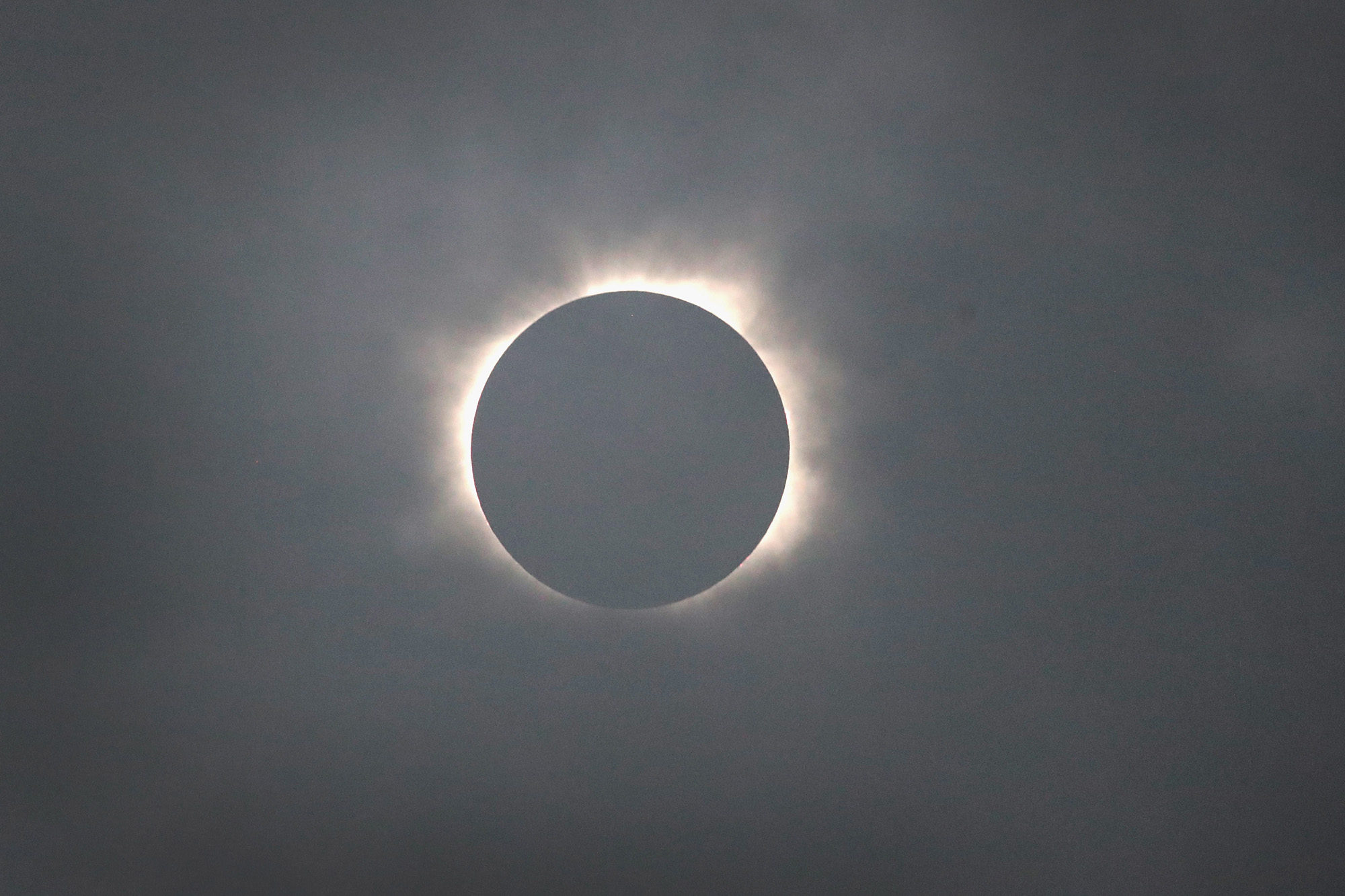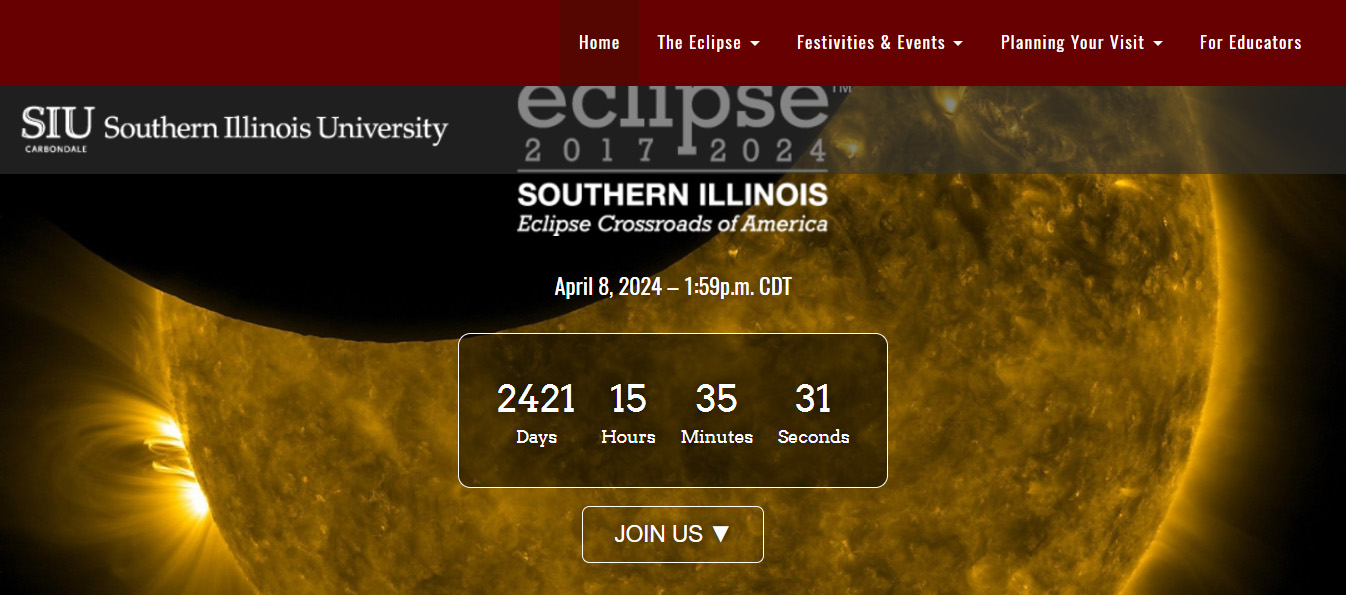After 'Super Bowl of Eclipses,' US Looks Forward to 2024 Total Solar Eclipse
CARBONDALE, Ill. — The Great American Solar Eclipse thrilled millions on Monday, but another total solar eclipse is coming to the United States in 2024, and planning is already underway.
For this small college town of 30,000, the total solar eclipse of 2017 — which crossed 14 states from Oregon to South Carolina on a path home to 12.2 million people — was sort of a dry run for 2024. Carbondale is at a crossroads between Monday's event and the next U.S. total solar eclipse, which will occur on April 8, 2024.
"This is an eclipse for all Americans and for the world," Lou Mayo, a planetary scientist with NASA's Goddard Space Flight Center, told Space.com the Monday of the eclipse, the first to cross the U.S. coast to coast in 99 years. "For us, it's kind of like the Super Bowl of eclipses." [The 2017 Total Solar Eclipse in Amazing Photos]
The same may be true in 2024. On April 8, 2024 (another Monday), the moon's shadow will sweep across Mexico and North America. The path of totality begins in Mexico, passing through Texas as it moves northeast to Maine.
"It's going to go from Mexico to Texas, into the Ohio River Valley, upstate New York and New England, and it even crosses Carbondale," Alex Young, a solar astrophysicist with NASA's Goddard Space Flight Center, said during a live webcast from Charleston, South Carolina, Monday as the moon's shadow left the U.S. "Those that got to see one there can get to go see another one in less than 375 years." (It typically takes 375 years for a total solar eclipse to pass over the same place on Earth twice, NASA officials have said.) [Total Solar Eclipse of 2024: Maps for 'Path of Totality']
On Monday (Aug. 21), Carbondale saw 2 minutes and 38 seconds of totality, close to the greatest duration (2 minutes and 40 seconds, a few miles away). The planning for Monday's total solar eclipse began in 2014.
The local Southern Illinois University (SIU) went big with a viewing show at its Saluki Stadium, as well as a carnival, craft fair, comic-con and science expo. The town also ran its own activities, including a Shadow Fest music festival and eclipse marketplace.
Breaking space news, the latest updates on rocket launches, skywatching events and more!
SIU teamed up with NASA, the National Solar Observatory, the Adler Planetarium and Lunt's SunLab to create both a science campaign to observe the eclipse and an outreach effort to share the cosmic event with eclipse chasers and first-time viewers at its self-styled Eclipse Crossroads of America. [In Photos: Awesome 2017 Solar Eclipse Signs & Celebrations]
"We just made, I don't know, a few hundred thousand more eclipse chasers in America," Bob Baer, co-chair of SIU's steering committee, told Space.com after Monday's eclipse, which saw high drama when a cloud floated in near totality time. (It thinned in time for some spectators to catch a glimpse of totality.)
Just as planning for the 2017 eclipse took years, Baer expects to spend the next few months debriefing scientists and organizers to see what went right and what can be improved for 2024. SIU's eclipse website has already begun counting down the more than 2,400 days left before April 8, 2024.
"It's really bizarre, the intersection of those center lines," Baer said of the two eclipses. "We are in a great location to see it, and that one has 4 minutes, just over 4 minutes, of totality."
To be clear, Earth will see total solar eclipses before 2024.
The next one will occur July 2, 2019, and will pass over South America, with totality visible from parts of the southern Pacific Ocean, Chile and Argentina. Others will occur in 2020 over South America and in 2021 over Antarctica, according to maps by veteran eclipse scientist Fred Espenak.
But just as the Great American Solar Eclipse captured the awe of the country because its path was within a day's drive for most people in the U.S., the 2024 event is expected to do the same.
Damien Ann Siegle, 42, of Indianapolis, watched Monday's solar eclipse dressed as an X-wing pilot from "Star Wars." She was part of a Rebel Legion group (along with Stormtroopers from the 501st fan group) invited by SIU to greet eclipse chasers and snap photos.
Was the eclipse, cloudy though it was, all that she expected after driving in from Indiana?
"No, it was more," Siegle told Space.com "I mean, to hear the crowd in the stands, I'm getting goose bumps just talking about it. The cloud cover! Is it going to happen? Is it going to clear? But … the Rebel Legion, we used our Jedi mind tricks, and we opened it up for you all."
"We enjoyed ourselves so much that we might come back down," she said. "So I'll see you in seven years!"
Email Tariq Malik at tmalik@space.com or follow him @tariqjmalik and Google+. Follow us @Spacedotcom, Facebook and Google+. Original article on Space.com.

Tariq is the award-winning Editor-in-Chief of Space.com and joined the team in 2001. He covers human spaceflight, as well as skywatching and entertainment. He became Space.com's Editor-in-Chief in 2019. Before joining Space.com, Tariq was a staff reporter for The Los Angeles Times covering education and city beats in La Habra, Fullerton and Huntington Beach. He's a recipient of the 2022 Harry Kolcum Award for excellence in space reporting and the 2025 Space Pioneer Award from the National Space Society. He is an Eagle Scout and Space Camp alum with journalism degrees from the USC and NYU. You can find Tariq at Space.com and as the co-host to the This Week In Space podcast on the TWiT network. To see his latest project, you can follow Tariq on Twitter @tariqjmalik.





